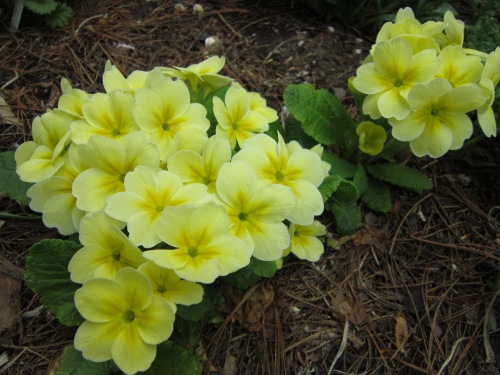The time has come to get busy sorting and packeting seed for the American Primrose Society seed exchange which I have been the manager of for the past three years. The seed has been ordered from a number of good companies and donations have all arrived from very generous members who have taken the time to collect, clean, label and send their precious seed to me so it can be distributed to members of the society all over the world!
During the short and cold days of winter I have lots of free time between the growing seasons to spend a few hours a week on this important and valuable task which is a great resource for folks to obtain seed of so many species of Primula that you can’t find anywhere else!
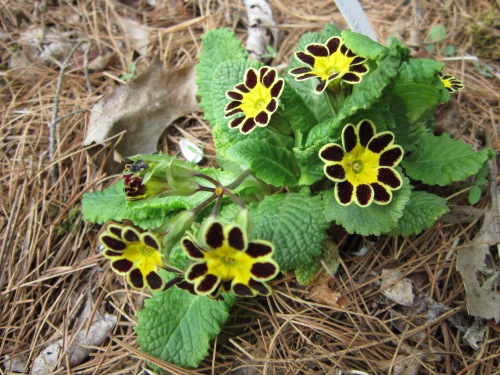
P. polyanthus Gold Laced are very coveted plants that wins many ribbons at the shows when grown to exacting standards.

P. polyanthus Garnet Cowichan grown from seed from Barnhaven Primroses of France with the best seed available and the APS seed exchange offers many of them!
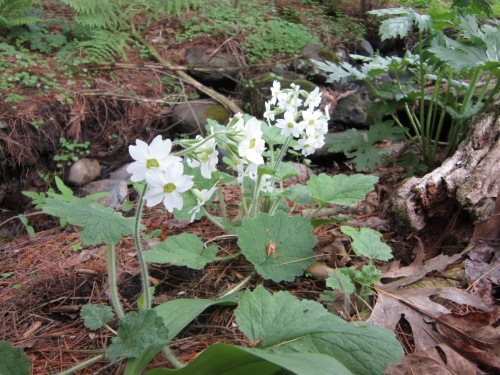
The rare and prized P. kisoana ‘Alba’ grows and spreads by stolons just under the soil surface and loves a nice moist and shady spot. Here it growing along the edge of the stream that runs through my property.
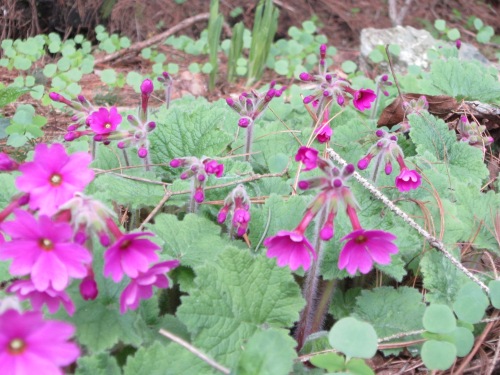
P. kisoana the sister of the previous white form. This one spreads much faster and creates a lovely groundcover fairly quickly.

There is seed of the Barnhaven Double Primroses on this years APS seed list which you will find here. Not every seed will become a double form but if any turn out as nice as this one it’s all worth it! Friend and fellow Primula nut, Arlene Perkins gave a piece of this plant to me a few years ago which she named ‘Agnes’ for a good friend of hers.
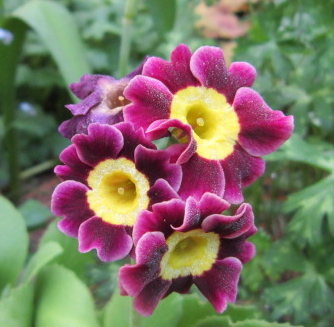
And of course there will be seed for many different P. auricula! I grew this one a few years ago from APS seed and it has always performed well for me.
Primula are really so easy from seed that more people should be growing them. There are many species that are very hardy and will survive winters up to at least US zone 4 without any protection! I will be testing that statement this winter as I never got around to covering my flats of seedlings and potted plants this fall. Right now they’re covered with a good layer of fresh snow, so I’m hoping that will stay around long enough to keep them well insulated against any deep freezes we are sure to get and have already gotten this fall!
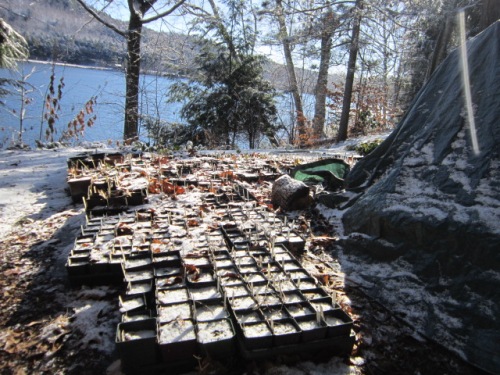
Trays and trays of plants and seed pots waiting for a good layer of snow because I was too lazy to give them a warm fleece blanket and layers of tarps.

One of my propagation beds full of P. auricula, Hellebores, P. sieboldii and others. These will winter just fine without protection and have grown so well here in partial shade.
Almost all Primula seed can be sown either in late fall or through the winter on top of moistened potting mix, covered with a thin layer of chicken grit and then placed outside to experience all the weather winter will throw at them with germination in the spring as the temps warm up. Easy as that! Only a few should be sown indoors and kept under lights or in a sunny window or if you’re lucky enough…a greenhouse.
I sow so many seeds through the winter that I order through APS or NARGS that I am kept very busy during this ‘down time’ until the nursery opens in April.

Spring is such a wonderful time for the gardener and seed sower…so much anticipation and expectation! Every morning is spent patrolling the gardens and nursery for signs of growth and when those first green shoots appear from something more unusual and exotic that was sown during the depths of winter, the feeling is fantastic!
Here are a few parting photos of Primula just to get you to take a look at the APS seed list and start dreaming about all the possibilities!

P.japonica seeds around and comes in so many different colors.



